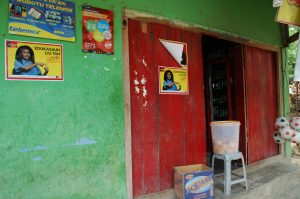Politics in East Timor have reached something of an impasse and could develop in a number of directions, either a return to old patterns or transformational, writes James Scambary
The election in East Timor on July 22 this year, the third parliamentary election since it voted for independence from Indonesia in 1999, promised a departure from the past.
Old antagonisms between former guerrilla commander, Kay Rala ‘Xanana’ Gusmão, and his party, the National Congress for Timorese Reconstruction (CNRT), and the Revolutionary Front of Independent East Timor (FRETILIN), led by his chief adversary, Mari Alkatiri, seemed to be a thing of the past.
The thaw had begun even earlier, back in 2015. Gusmão unexpectedly invited a number of leading FRETILIN members into government. Gusmão stepped down as Prime Minister and anointed former FRETILIN health minister, Dr Rui de Araujo, to take up the reins.
Encouraging new developments
As part of this rapprochement, an informal agreement was made not to begin any major new projects immediately before the elections. This largely eliminated the kind of sleaze and pork barrel politics that marked the previous election.
Also, after a violent incident in March where a clash between rival political supporters torched 36 houses, parties swiftly moved to sign a code of conduct both for their supporters and for campaigning, thereby avoiding a return to the vitriol and violence of the past.
A sense of a quiet transformation in Timorese politics, that it had finally turned the corner and left the ghosts of the past behind
Another novelty was the appearance of a new policy-based party, the Popular Liberation Party led by former President, José Maria Vasconcelos—popularly known as Taur Matan Ruak. The PLP ran on a platform of anti-corruption and sustainable development that was heavily critical of the CNRT economic and development record.
Overall, there was a sense of a quiet transformation in Timorese politics: that they had finally turned the corner and had left the ghosts of the past behind.
The breakthrough on the maritime boundary after a decade of wrangling also provided grounds for optimism through the promise of renewed revenue – a welcome antidote to the gloom surrounding the country’s rapidly diminishing public finances.
Unexpected results
FRETILIN and CNRT were expected to dominate the share of seats. There were few observers who gave much of a chance to the minor parties. This included the long-established Democratic Party which had been part of the governing coalition since 2007, but had seen its star wane as FRETILIN’s rose.

The main surprise, then, in the eventual outcome, was the decline in the CNRT vote after a significant increase in the previous election. FRETILIN largely maintained its vote, becoming the governing party almost by default.
The big winners were the PLP with eight seats, and another relatively new party, Enrich the National Unity of the Sons of Timor (KHUNTO), with five.
Drawing conclusions about election results is always a fraught task in East Timor. Public discontent with various issues such as corruption does not always translate into votes at election time. Despite a 2012 survey finding that nearly 60 per cent of the population were concerned about rising corruption, the government was returned with a much-increased majority.
While the resistance narrative continues, many voters, too young to remember that period, were voting for the first time
There are also many subterranean social and political currents in East Timor that pass under the radar of standard opinion poll surveys, as people found out in the 2006 Crisis.
Nonetheless, as many commentators agree, the youth demographic was important.
While the resistance narrative continues to constitute the most important factor shaping voting preferences and the two main parties’ base of support, many voters too young to remember that period were voting for the first time.
Beyond anodyne promises to boost employment, the two main parties did little to court this growing demographic. The PLP’s success is also evidence of an emergent politically literate, reform-minded section of the population who want to see concrete policies not populism.
How parties measured up
However, these two new parties also drew a lot of votes from rural areas, pointing to other more complex factors, including the continued importance of family and resistance veterans’ networks.
Polls conducted prior to the elections also indicated widespread dissatisfaction with the state of roads. Despite a decade of massive and mostly unregulated expenditure, roads have deteriorated, along with service delivery: notably health.
Another possible explanation for the result was the nature of campaigning by the main parties.
FRETILIN mobilised its formidable party machine with an army of dedicated militants, right down to the sub-village level.
The PLP and KHUNTO made up for in effort what they lacked in resources, sending party members out into remote regions and villages. Going door-to-door and even out into the fields with farmers, they earned their parties the visibility vital to success in a context of low literacy and minimal political debate.
In the last three months or so since the election, the early optimism has evaporated
By all accounts, CNRT failed to show up. Perhaps they were complacent in their belief that Gusmão’s personal authority, popularity and a decade of patronage politics would get them over the line. They relied instead on courting local figures of influence to carry their blocs of supporters with them, but this did not work.
Indeed, the heaviest swing against CNRT was in their stronghold and Gusmão’s birthplace, the Manatuto municipality. Locals there claimed that beyond the usual rallies, the CNRT hardly bothered to campaign.

In the last four months or so since the election, the early optimism has, however, evaporated. There is now widespread apprehension of a return to the old antagonisms.
Despite early indications that FRETILIN might form a coalition with CNRT, this did not happen. A tentative coalition was formed with the PLP and KHUNTO, but this later collapsed. FRETILIN then formed another unlikely minority coalition with the PD, who, like CNRT, had hitherto nurtured a decades-old historical enmity towards FRETILIN. How stable that coalition will be as a result is hard to tell.
Uncertain times
The PLP—despite their leader Taur Matan Ruak having spent the best part of two years lacerating Gusmão for corruption and mismanagement (at one point dubbing him ‘Suharto’)—has joined the CNRT in a new alliance with KHUNTO.
Together, they hope to unseat the government, despite earlier pledging not to. Both sides are now engaging in increasingly creative interpretations of the Constitution as they attempt to outmanoeuvre each other.
FRETILIN is favouring new elections next year, while the alliance are hoping to have the government dismissed before that, leading to an extended political limbo.
This hiatus has numerous implications, notwithstanding for Timor’s ambition to join ASEAN.
The future of the Greater Sunrise reserves was always uncertain, given disagreements between the Timorese government and the principal contractor, Woodside, over how this resource should be developed. Ongoing political uncertainty only further delays any agreement.
Any potential investors encouraged by the new spirit of détente will also be apprehensive. If FRETILIN cannot get a budget through Parliament, there will also be difficulty in implementing basic government service delivery and paying its civil servants.
There was once a self-deprecating joke told by Timorese that referenced East Timor’s capacity for self-implosion, most notably their sectarian conflicts after gaining freedom from Portugal in 1975 and then in 2006.
It goes like this: a man goes to the market to buy crabs. At one stall he sees there is a basket of Indonesian crabs and a separate one for Timorese crabs. He asks why the Indonesian crab basket has a lid and the Timorese one does not. The vendor explains that the Indonesian crabs always try to escape, whereas when the Timorese crabs try to, the others always pull them back.
How this current impasse is resolved will be key to whether this pattern is perpetuated, or if Timorese politics genuinely has transformed.
Featured image: PLP supporters Source: author

